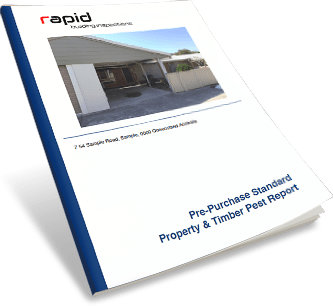Video Blogs
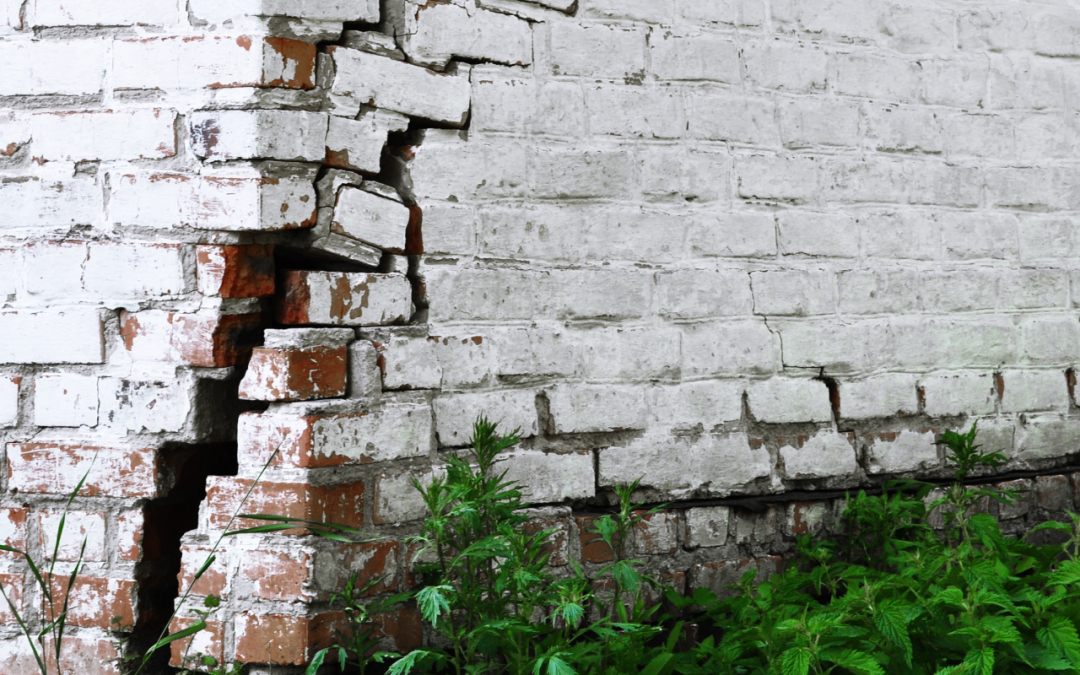
The defects you can’t afford to ignore
Finding the perfect property can be like finding a needle in a haystack. Even when you do find a property that seems ideal at first glance, looking more closely may reveal defects that need to be addressed. The easiest way to identify these potentially costly defects...
The defects you can’t afford to ignore

Finding the perfect property can be like finding a needle in a haystack.
Even when you do find a property that seems ideal at first glance, looking more closely may reveal defects that need to be addressed.
The easiest way to identify these potentially costly defects is to put your trust in a qualified building and pest inspection specialist. By ordering a building and pest report or structural condition report from a qualified inspector, you could avoid making a costly mistake.
Another benefit of obtaining a building and pest inspection report is that it may improve your powers of negotiation. After all, if defects are discovered, offering a lower price that reflects the reality of necessary repairs may be a smart move.
Check out our photo gallery of the most common defects our inspectors find every day
Uncovering hidden defects
As a seller, marketing a property that may have flaws can be a tricky proposition. Some issues may not be fully disclosed and hidden from the naked eye.
A foolproof way to ensure the property you make an offer on is free from potentially costly defects, is to get the protection of a building and pest inspection report from qualified inspectors.
When you’re looking at a property you like, keep an eye out for these potential defects:
Does bouncy or uneven flooring point to a structural issue?
Finding out the secrets of a property can sometimes be more about how it feels than looks.
When it comes to flooring, pay attention to the way it moves beneath your feet – and if it is level.
Looking for gaps or unevenness between the floor and the skirting can be a way to identify sinking stumps. For timber flooring, jumping lightly at different places within the property can help detect rotten floorboards, infestations of termites, borers or other pests, or issues with the sub-floor framing.
For concrete floors, look for buckling floor tiles or rotten carpet. Both are signs of dampness below.
Identifying and repairing dampness to a concrete slab can be a costly repair job. If there are significant cracks in the concrete, it could be a sign of potential structural problems.
Are the wet areas correctly sealed?
Look out for signs of leaks in wet areas, such as bathrooms, laundries and kitchens.
Fresh paint jobs could be used to hide water leaks, rotting timber and signs of rising damp.
Testing the water pressure to all the taps is important, as it could reveal bigger issues. Partially filling sinks and bathtubs, then watching how quickly the water drains away is another good way to check for potential issues such as poor drainage.
Whenever you do decide to make an offer on a property, choose a quality conveyancing team who will do a contract review for you, rather than just relying on a building and pest report or structural report. This will help ensure that you make the sale subject to results from a building and pest inspection report or structural report, where a qualified inspector can look for some warning signs your untrained eyes may miss.
Cracks in the walls and ceilings may mean major problems
Splits around cornices and joints where walls meet ceilings often show tell-tale signs of defects.
Fresh plaster and paint work are often used for a quick cover-up, but an experienced inspector knows how to see past these concealments to find bigger, and potentially dangerous structural issues.
Illegal renovations/extensions could cost you a fortune
This growing problem can end up costing property buyers tens of thousands of dollars – and even more! Sometimes, searches conducted as part of the conveyancing process can expose illegal building works, but the best way to identify it is with a thorough inspection from qualified building inspectors who may notice when something may not be up to standard.
If illegal renovations and extensions contravene local building regulations, you may be up for a hefty legal bill, as well as costly repairs and refurbishments to undo the work.
Are there signs of rising damp?
Tapping solid brick walls and listening for a change in tone, or a hollow sound, can indicate an issue with damp. Rotting skirting and architraves, as well as peeling paint or lifting wallpaper can be other warning signs.
Plaster patch-ups and fresh paint may be sign of a cover-up, so be sure to book a qualified building inspector to reveal the reality.
Is the roof secure?
Buckled eaves showing signs of water stains could indicate an issue.
Broken roof tiles give pests an entry point and let water in – which could lead to major issues in the ceiling and roof space. Remember that even small holes can result in large leaks. Replacing a roof is expensive!
Do the windows work?
Excessive condensation on windows and sills, along with signs of mould growth, can be a sign of poor ventilation or damp. Check that windows open and close smoothly. Make sure you look for cracks in the windowpanes or rotting/rusting window frames as these may point to signs of water leaks.
Is the electrical wiring safe and compliant?
While a simple flick of a power point or light switch can tell you if the electricity is working, it can’t reveal the condition of the wiring, or its compliance. Asking questions about recent renovations can help you understand how recently work may have been done – and if it was done by a licensed electrician.
No matter what type of property you are planning to buy, it is a significant investment – and one that demands proper legal protection and due diligence. Don’t risk buying a property with defects you can’t afford to ignore.
Talk to Rapid Building Inspections to book a building and pest inspection report or structural condition report to suit your needs, before you buy.
At Rapid, our team of qualified trade experts are committed to helping you find the right property. Thanks to our use of the latest technology, we make sure your property is in top condition so it’s ready to enjoy from day one. You’re always in great hands with our team of professionals so book your inspection today to get started.
Eco-friendly ways to deal with bees and wasps in your property
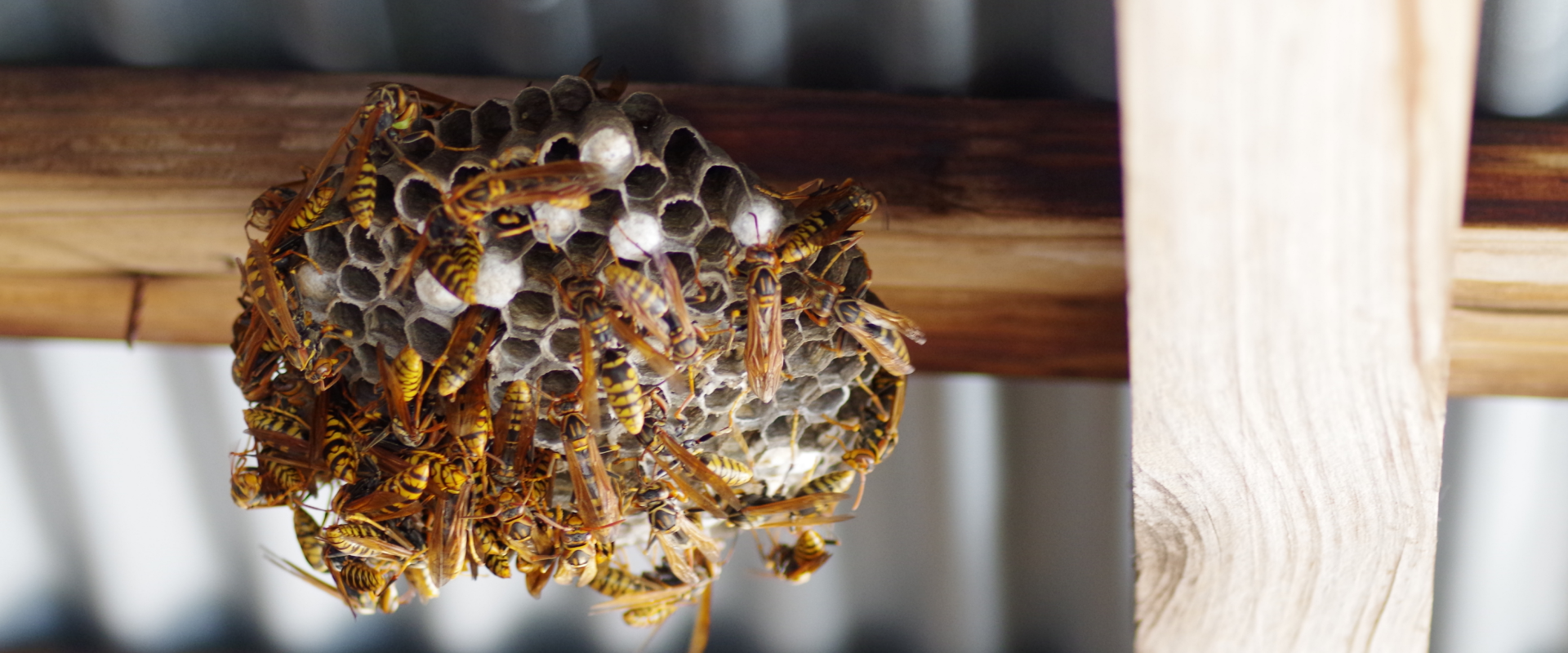
When our qualified pest and building inspectors at Rapid Building Inspections find evidence of pest infestation that could harm the structural integrity of your home – or even wreak havoc with electrical wiring – our report alerts you to the problem. What comes next for you is deciding how to manage the issue.
Different pests create different potential problems, and some creatures that are pests in some people’s eyes are protected species, or helpful for the environment, so exterminating them is not the answer.
That can certainly be the case when it comes to bees and wasps. When you find out that there is a hive or nest on your property, worrying about the risks that stings can pose to personal health and safety is a genuine concern – especially if someone in the household has an allergy issue.
With some practical insights into the different types of bees and wasps that may be inhabiting your property – and the damage they have the potential to cause – you can make the best possible decisions to suit your property. That might involve figuring out ways to learnt to live with them, or, in the case of pests that can harm you and your property, arranging to have them removed safely.
Bees
Bees are usually a dull shade of yellow or golden-brown, with black stripes around their back legs and bodies. Although bee stings can be painful, most people experience bee stings that are not life-threatening or dangerous – although that is not the case for people with allergic reactions.
Regardless of how dangerous a sting may be to you or someone in your household, if you find out your home is also home to a beehive, it needs to be removed and managed properly. Removing beehives requires expertise. Look up local beekeepers in your area for help. This is an environmentally responsible way to help deal with a bee problem without using toxic pesticides. Although worker bees have a short life-span of around five weeks, a queen bee can live for three years – and that means that, if a hive is on your property, it’s there to stay for quite a while.
You can help prevent bee infestation with some careful property management. Bees usually build beehives near a water source, because they use water to regulate the temperature of the hive. Beehives are often found in the corners of your roof, where water may pool. If you have open water sources around your property, using covers on pools or spas, and ensuring outside sinks are not filled with water and your roof has proper drainage, will help reduce the risk.
Bee infestations can also be prevented with careful attention to property maintenance and cleanliness in and around the home. Ensuring garbage bins and compost bins are clean and secure, helps minimise the risks of bees calling your property home. Eco-friendly bee control can include use of non-toxic chemicals, such as peppermint oil or cryolite, which can be sprayed on areas of your property that bees may be attracted to.
Bees can also use cavities, including within walls or home insulation, to build their hives. A large hive can contain tens of thousands of bees and the weight of it, including the honey within it, can damage your walls and your insulation. Even a hive that is abandoned by bees that have been repelled by eco-friendly solutions still needs to be dealt with to prevent the damage caused by waxy honeycomb residue left behind. A wax or honey stain can leave an exterior wall looking unsightly but can also lead to other problems. Moths, flies, and ants can also be attracted to this sweet, sticky residue and use the traces bees leave behind as an open invitation to move in. Removing all remnants of a hive – even after the bees are gone – also prevents any bees from coming back there.
By remembering that bees are an essential part of any healthy, thriving eco-system, by helping pollinate plants, finding ways to deal with bee control and removal in an eco-friendly way is a positive step to keep your home and garden healthy, without compromising your property. Natural ways to help repel bees from your property and garden include planting bee-repelling plants, such as Eucalyptus, citronella, mint, pennyroyal, marigolds, and basil.
Wasps
Wasps are mainly black in colour, with yellow markings and yellow and black stripes on their back half, with black dots down each side of the abdomen. In Australia, the two main wasps in Australian backyards are the European wasp and the native paper wasp.
Wasps typically build their nests on tree branches, in bushes, or within your property’s fascias. Wasps are known for more aggressive behaviour and the power to sting repeatedly – causing incredible pain – but they also help pollinate plants and are responsible for some other environmentally friendly behaviours, including eating other unwanted garden pests, such as plant-damaging caterpillars. Wasp removal should be done in a non-toxic way – and without causing harm to other species.
If a wasp community has moved into your property, enjoying an outdoor lifestyle and entertaining friends and family can prove impossible, with wasps attracted to food and drinks at backyard barbecues and gatherings. Professional wasp removalists can assess the situation and provide you with the best possible options to remove the wasp nest and ensure wasps don’t return. These days, many pest removal solutions are non-toxic and won’t cause harm to other species.
You can help prevent wasps visiting your home by ensuring that compost areas and rubbish bins are secured and covered. Sealing any gaps in brickwork or weatherboards can help prevent wasps from creating a nest within the safe, cool, cavities of your property. Ensuring doors and windows are property sealed – preferably with insect screens attached – will also minimise the risk of wasps entering your home.
Natural ways to help repel wasps from your property and garden include planting wasp-repelling plants, such as Eucalyptus, citronella, trumpet flowers, geraniums, cloves, marigolds, thyme and basil. By growing plants like these around the perimeter of your property, where wasps are likely to look for places to enter your property to nest, you can minimise the risks of them getting into the wall space of your home.
Learning to live with pests – and prevent property damage
Although some pests need to be lived with, rather than destroyed, getting a building and pest inspection report is an essential part of your property purchase, to give you a better understanding of what might be living in your property and what steps – and spending – might be needed to rectify the issue.
Book your building and pest inspection report from Rapid Building Inspections today.
7 eco-friendly tips to help protect your property from possums
Deciding which animal is a pest and which ones you might be prepared to live with isn’t always black-and-white. When it comes to possum they may be seen as pests, but they are a protected species. How you can learn to live with (or without) possums might mean a change in behaviour – and some practical tips to help protect your property.
Some pests need to be removed – immediately
When our qualified inspectors deliver building and pest inspection reports, our focus is on the types of pests that can wreak havoc on your property’s structural integrity – and leave you with a potentially costly repair bill. In terms of termites, if our radar equipment detects them in your property, there is only one solution: exterminate! With a single termite colony housing as many as one million termites, protecting your property from the damage that many termites have the potential to cause is critical. When it comes to the discovery of other pests, though, extermination is simply not an option – and that’s a great thing!
Learning to live with protected possums – and still protect your property
Dealing with possums on your property can still cause stress – especially if they are causing damage, nasty smells, or a lot of noise that keeps you awake at night.
In most suburban backyards across Australia, brushtail and ringtail possums are the most common species you’ll see – and, like all possums in Australia, they are a protected species, under the Wildlife Act 1975, which means killing them, harming them, or relocating them is prohibited. In less urban areas, and, depending on the state or territory you live in, there are more than 30 different Australian possum species who might pay your property a visit one day.
To reduce your stress levels and protect their safety at the same time, learning how to live with possums can be a positive step to look after your home, as well as their need for a healthy habitat.
To help manage what you might see as a pest problem, try these handy 7 tips to help deter possums from your property
1. Secure your compost and rubbish bins
Possums love food – even if it’s rotting. Your beloved veggie patch will be just as appealing to them – especially if it’s filled with delicious herbs and crunchy vegetable – and if you use compost as part of your gardening goodness, it will be an open invitation for possums to visit for dinner. Consider fine netting (but make sure you buy the size that can’t trap and kill creatures) to protect your growing garden. To stop possums foraging through rubbish and compost bins, place a heavy brick on the lid, or secure with a latch that possums can’t penetrate.
2. Provide a separate food source
Providing your furry-faced possum friends with a separate food source in your garden can be a smart way to protect the plants you love. By growing native fruits, perennial edibles and spicy leafy greens for them, you’re also helping create a more natural, native eco-system in your garden.
Take the time to cover your delicate plants, and, if you have a veggie patch, grow more than you need so there is enough for your family, as well as the possums.
3. Garlic and mint are natural repellents
Possums are deterred by the smell of garlic and mint, so planting mint around your garden, and growing garlic chives, or using garlic spray or crushed garlic cloves around the plants you want the possums to leave alone can help. Not only is it cruelty-free, it’s also environmentally friendly and affordable. Other possum-repelling plants include geraniums, chrysanthemums, and prickly plants, such as banksias or hakaeas.
4. Trim trees and branches close to sheds and structures
Possums can only jump sideways and up but they’re not great at jumping down long distances.
By trimming branches that give them a ladder up to your roof, as well as a platform to leap from above, you’ll help prevent the likelihood of them getting anywhere near your home.
5. Block access points into your roof or wall cavities
Possums are nocturnal creatures and by day they love to hide away in safe, dark spaces. Blocking access to your roof is critical to sustainable possum prevention — but make sure every member of the extended possum family isn’t trapped in your roof first.
6. Explore ultrasonic pest repellent
This humane, chemical-free and environmentally friendly form of possum control promises to keep possums away by emitting sound frequencies that repel pests – but can’t be heard by humans.
7. Install a possum box
Possums in the roof? Consider employing a professional possum catcher to set a trap to catch it and remove it from your roof – making sure they also block off the entry points so it can’t move back in. By providing a safe, cosy alternative somewhere in your garden in the form of a purpose-built possum box, you can still offer a warm, weather-proof home – just not yours!
Learning to live with living creatures such as native birds, bees, and other wildlife, can be the best thing that happens to your outdoor living space – as long as it’s not risking damage to your own property.
By changing a few habits of your own, you can change the habits of the creatures that share your space – and exist together happily.
For any information about checking if other unwanted pests might affect your property, talk to Rapid Building Inspections today.
Meet the man behind Rapid Building Inspections
Daniel Watts is director and co-founder of Rapid Building Inspections – a fast growing national building and pest inspection company that helps thousands of Australians each year. Under Daniel’s leadership the team have worked to deliver a suite of services with their clients’ safety and assurance at front of mind. But the road that led Daniel to this position is both unique and surprising. We sat down with Daniel to hear his story.
Beginning back in high-school days, Daniel’s first fork in the road began with his experience of school. In year 11 as a 17 year old, Daniel found frustrations with the way education was delivered, he remembers being asked by one teacher to write an essay response to a picture of the Australian landscape. For Daniel, this task seemed to reinforce his idea of how detached and irrelevant secondary school could be. It was a realisation that helped crystalise a plan Daniel had been considering for a while – and, although he didn’t realise it at the time, it was the first step towards his role as director of Rapid Building Inspections. That same day, Daniel went home and announced to his parents that he was going to leave school and join the Australian Army as an apprentice carpenter and joiner. Having watched his dad enjoy steady work as a builder, becoming a tradie made sense – doing it as a member of the Australian Army had the added bonus of seeing the world and getting paid to gain his trade qualification at the same time.
Over the next six years, Daniel gained a host of practical skills. He served in the military as a carpenter and combat engineer, with a six-month stint in East Timor that brought home the sober realities of what was happening across the world. “When I arrived there, the country was burning – literally. I stepped off a plane and the whole city we flew into was in flames,” says Daniel. “Our job there was to help restore stability – to the country and the local people who lived there. So, once I left the Army, I packed up my tools and went back to East Timor in 2002, to spend a year with an organisation called Opportunity International. I was training locals in trade skills so they could help rebuild their own country.”
The first-hand experience of international need and the structures of non-government organisations (NGOs) drove Daniel towards his next life move with fresh motivation. His next step was to return to education as a mature-age university student, eager to explore better, more effective ways to deliver aid development support to people in need with a degree in International Studies.
To finance his way through university, Daniel balanced the required his contact hours with time spent running a small building business of constructing carports, decks and pergolas and employing some of his younger course colleagues to do the grunt work for him.
Once he achieved his degree, he took up work with a business that specialised in training leaders in business development and sent him across Asia and Africa from 2005 to 2017, including a period of time living and working in Cambodia. From Daniel’s perspective, the best international aid was providing locals with the knowledge, training and tools they needed to create change – and inspire other potential leaders – in their own communities. During this period, Daniel also signed up to complete a Masters’ degree in anthropology and development in 2009.
Even as a qualified tertiary lecturer, Daniel continued to take on bespoke building projects as a side hustle to his university work. Although the aid development sector had been a passion for a long time, it had never been conducive to paying the bills. For Daniel, funding his growing family and professional goals had often meant working three or four jobs at once.
In 2016, Daniel faced some serious challenges. Numerous illnesses connected to his travel history, including malaria, salmonella and typhoid, finally took their toll on Daniel’s health. He ended up in hospital feeling exhausted, burnt out, broken – and broke. He knew that something needed to change.
In this time, Daniel began a conversation with Deep Blue Company (DBC) founder, Christopher Lane, about a new opportunity to deploy his practical skills in a meaningful way. By this point, Daniel was familiar with the DBC’s game-changing, digitally-led conveyancing brand, Conveyancing.com.au, and industry figures revealed that approximately 70 per cent of all prospective buyers seek a building and pest inspection report before committing to their property purchase. Christopher’s proposal was to create an adjacent brand that could deliver that essential service to conveyancing clients.
It was not a role that Daniel had imagined for himself, but Christopher understood the diversity and value that Daniel’s professional history offered. While offering support and coaching as the business began, he agreed to let Daniel run the brand and its team his way. Rapid Building Inspections launched in May 2017.
In the beginning, the business started small, with the practical work, sales and admin handled by a small team of just three people. Daniel worked alongside just one other building inspector to service the Sunshine Coast region, with a dedicated salesperson based in the Philippines to handle leads and enquiries. Daniel recalls, “I still remember standing on a roof, labouring on a building project, answering my mobile to take those early calls. Then I’d grab my laptop and race off to the a bathroom cubicle to process the payment and get the completed report reviewed and sent off to the client.”
Building a presence in Brisbane came next, with one new inspector hired – and then another. The growth of their client base was rapid, delivering more than 1,500 inspections across the combined Brisbane and Sunshine Coast region in that first year. In the second year of operations, the Rapid Building Inspections’ team grew to employ inspectors in metropolitan Melbourne and Sydney and the number of inspections delivered across the country totalled close to 5,500.
Year three of the brand’s growth included servicing Western Australia’s metropolitan areas, with 10,500 inspections completed across four Australian states. Tasmanian and South Australian metropolitan regions were added next, with 14,000 inspections completed in the July 2022-June 2021 financial year, despite the impact of COVID.
Today, as the 2021-2022 financial year draws to a close, Daniel says that, with around 40 inspectors – including contractors – now working across all Australian states, Rapid Building Inspections is on track to deliver around 15,000 inspections. Plans to service the territories as well as focus on significant regional centres are also in the pipeline.
In his role overseeing the qualified inspectors within the business, Daniel’s impressive trade experience has given him the skills and insights to conduct all the necessary research that led to development of the original manuals and reports that guide every member of the inspection team. Along the journey, many team members and leaders in the business have further contributed to the development of Rapid’s manuals, reports, training processes and systems.
“I’ve landed in the corporate role I never imagined having,” says Daniel. “My original dream was to do 1,000 inspections in a month, and we achieved that towards the end of our second year of operations. Now, we have done as many as 1,600 a month – and it’s still growing.”
Success, he says, has come from creating a positive, sustainable culture, combined with a commitment to address common complaints about the building industry. “Three things kept coming up,” says Daniel. “Lack of care – including care about clients and quality of workmanship – was one. Lack of communication was another, and lack of professionalism was also critical. Those three things became the three core drivers of the Rapid Building Inspections’ culture and today,” Daniel says, “they continue to guide every decision made within the business.
With property purchases being one of the most significant financial decisions most people will ever make, Daniel knows that the reports his inspection team provide help people make informed choices. His lifelong commitment to helping people through practical means has been the driving force in the Rapid ethos, as Daniel and his team mitigate the risk in purchasing and maintaining property for everyday Australians. “What you don’t know, is what you’re risking,” he says. “We want to help minimise that risk for people, which is why we’re in this business and why we encourage everyone to get a building and pest inspection.”
Get in touch with the team at Rapid today We are available 7-days a week
If you still have any questions, feel free to contact us, and we’d be more than happy to answer any questions you may have.
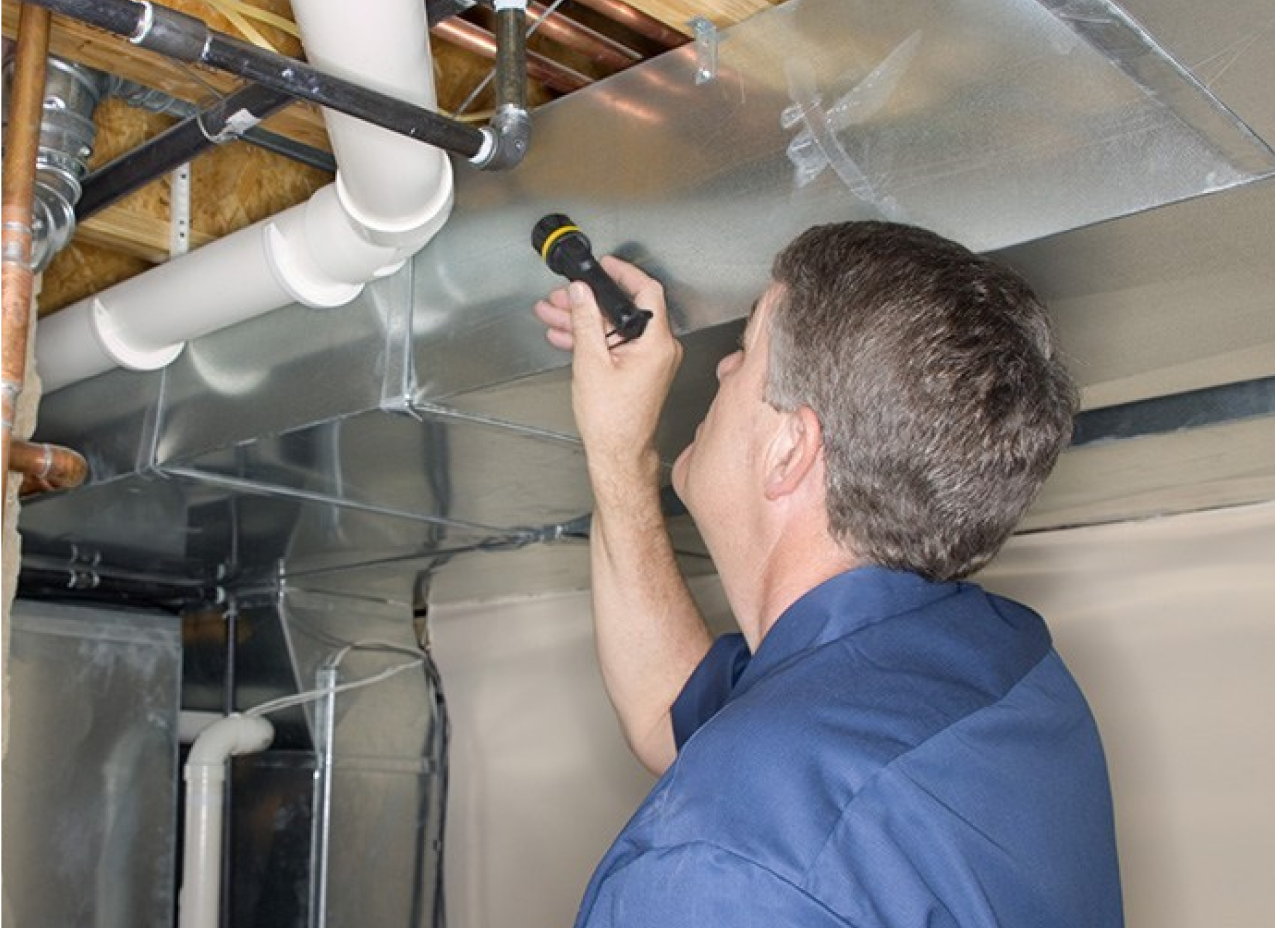
We’ve been chosen to feature in the new Selling Houses Australia episodes

When the popular home renovation series, Selling Houses Australia, returns to Australian screens for its brand-new season on Wednesday, March 30, our team at Rapid Building Inspections is proud to feature as the show’s preferred building and pest inspection specialist partner.
Engaging the services of qualified building and pest inspectors is a critical step in the property buying journey. It’s a reality that’s well understood by the trusted property experts at Selling Houses Australia – and something that helps potential buyers make informed decisions that can save them precious time and money.
But as the show highlights, building and pest inspection reports aren’t only for potential buyers.
On Selling Houses Australia, the cast helps stressed-out vendors take their properties to market successfully – with each seller aiming for the best possible sales result. By sharing the insights from our comprehensive Rapid reports that were undertaken on nine out of ten of the featured properties, our Rapid Building Inspections team prove that we play an important part in the property selling journey too.
As a seller, accessing a building and pest inspection report delivers valuable information that helps you decide how your renovation and repair budget can have the most impact on the way that your property presents to potential buyers.
When it comes to property inspections, experience matters
With offices across Australia, our Rapid Building Inspections team has an impressive reputation that thousands of Australian property buyers and sellers trust.
Detecting potential issues in the properties inspected for the new Selling Houses Australia episodes was a task we undertook with the same professional care and exceptional customer service that we share with all our clients. Access to the latest and best technology and tools available ensured that all the buyers whose properties were checked by our qualified inspectors received a thorough understanding of their property’s condition.
Professional building and pest reports deliver peace of mind
Our services include building and pest inspections, stage inspections, depreciation schedules, dilapidation reports, structural inspections (WA), owner builder reports (VIC), and drug residue testing – and because our inspectors are all trade experts and qualified building and pest inspectors, we’re able to spot issues that less experienced inspectors might miss.
Don’t miss Rapid Building Inspections on Selling Houses Australia from March 30
Make sure you watch series 14 of Selling Houses Australia – each Wednesday at 8.30pm from March 30, 2022 on Foxtel’s Lifestyle channel – to see the important difference that professional pest and building inspection reports can make to the goals of Australians hoping to make their own property dreams come true.
2022 is the Year of the Tiger: Here’s what it means for you

As Lunar New Year arrives, it’s the perfect time to consider what 2022 holds in store. According to the Chinese Zodiac, we’re entering the Year of the Tiger which brings an atmosphere of change, risk-taking, adventure and growth. Lunar New Year is a festive time in Australia with live music, food stalls and fireworks on offer as well as the much-loved Dragon Boat Race held at Sydney’s Darling Harbour.
The past couple of years have been difficult and draining for many which is why there’s a great sense of eagerness and elation for 2022. We’re witnessing a desire to forge new social connections and a willingness to consider life-changing choices. Analysts suggest the Australian economy will continue to return to its former pre-pandemic glory and with that comes a multitude of opportunities.
So, what does the Chinese Zodiac tell us to expect from 2022 and how can you harness the Tiger’s energy to prosper in the world of property? Let’s find out!
Learning from the Tiger
Chinese legend retells the story of how the once weak tiger rose to success by learning from the clever cat. The forest had grown chaotic with humanity in crisis and the environment in ruins. Over time, the tiger established order and replaced the infamous lion in the Chinese Zodiac as the king of all animals.
This empowering story leaves us with wisdom which we can carry with us into the new lunar year. By learning from others, recognising your own flaws and finding strength in your mistakes, you too can rise to success, as the Tiger did, to enjoy a year of abundance. Whether you are considering buying your first home or investing in a holiday house for the whole family to enjoy, 2022 may just be your year!
Keep an eye out for lucky numbers and colours
If you’re feeling inspired and want to try adding the concepts explored in the Chinese Zodiac, then we’ve put some ideas together for exactly that.
If you’re looking to buy your first house or apartment this year, you might want to consider choosing a street number aligned with one of the Tiger’s lucky numbers: 2, 4, 12, 22, 32 and 45. This is a great place to start.
According to the Chinese Zodiac, when it comes to lucky colours, the Year of the Tiger is associated with red, green, black and yellow.
Why not try refreshing a study with a warm yellow to brighten a space? A red door is a timeless statement and a great way to add character to any property. Replacing outdated window trims with a black finish is a simple trick to effortlessly modernise any room. For a splash of green, indoor plants such as the much-loved Monstera are low maintenance and improve indoor air quality.
A side of water, please!
The Chinese Zodiac suggests that the north-east areas of your home are linked with prosperity while the water element of 2022 is associated with calm, clear thinking. You could take advantage of your home’s north-east space with a water symbol which translates into wealth and abundance in the Year of the Tiger. Water fountains, fishponds or indoor aquariums could be a good place to start.
Expect welcome change
2022 is a year to adopt a flexible, open mindset. Situations could change quickly when you are house hunting. From unexpected news to lofty dreams turning into a reality, your ideal home could be around the corner if you remain calm, clear and attentive.
The Tiger is determined and daring but can just as easily struggle to manage their hot temper. By putting aside your ego and embracing a rational approach, you can take great leaps in both your personal and professional life. Adventure is the theme this year so be open to new opportunities when they arise.
Achieving success
2022 is set to be a rollercoaster of a year so hold on tight and buckle in. While changes are expected, success can be achieved by overcoming setbacks.
If you’ve been waiting for your chance to enter the property market, you’re longing for professional change or you’re ready to take a leap, 2022 may be the time for you to act.
At Rapid, our team of qualified trade experts are committed to helping you find the right property. Thanks to our use of the latest technology, we make sure your property is in top condition so it’s ready to enjoy from day one. You’re always in great hands with our team of professionals so book your inspection today to get started.
Offer to Own makes buying and selling property a quick and effortless process. With a multitude of services at the ready, tracking and managing your buying journey never looked better. Whether you’re a real estate agent or buyer, Offer to Own is here to help you.
Negotiate on price with a building and pest inspection report
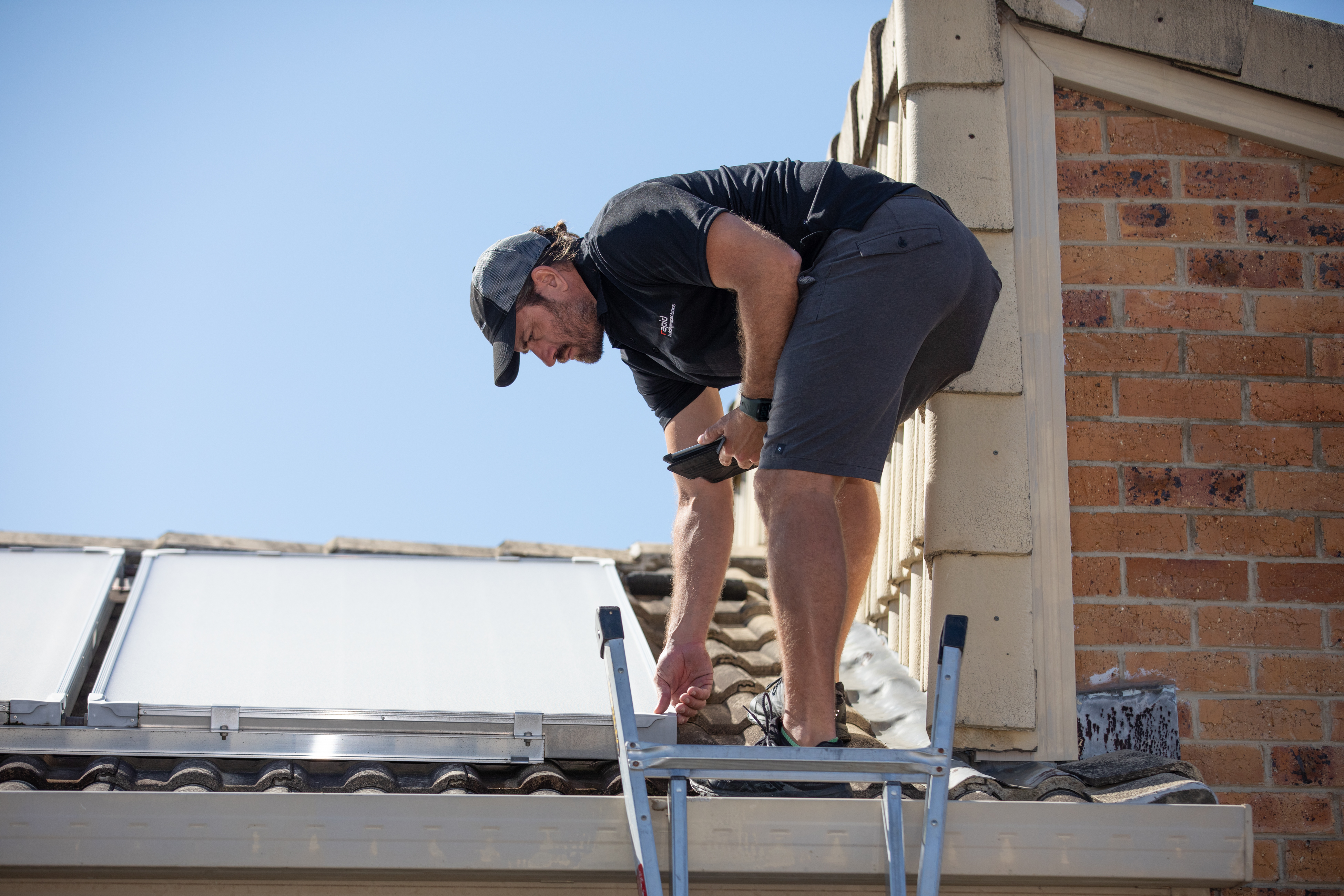
When you’re looking to buy a house, you want to use your money wisely. There are many associated costs that come with buying property, not to mention the actual price of the house itself. It’s understandable that home buyers want to minimise their outgoing costs and only pay for things that are absolutely essential.
If you’re weighing up whether it’s worth spending a couple of hundred dollars on a building inspection, here’s what you need to know.
You could avoid a terrible purchase
A building and pest inspection is one of the most valuable services when you’re looking to buy a house. When obtained before you purchase the property, the inspection can help you avoid having to pay hundreds of thousands of dollars if it reveals extensive damage, you were not aware of that would cost a fortune to repair. A termite infestation is just one reason potential buyers reconsider buying a home. If an inspector does discover termites, the report could help you avoid making a costly property purchase, one that could have been a waste of hundreds of thousands of dollars of your money.
A building and pest inspection can help you negotiate property price
A building and pest inspection can actually work in your favour. If it reveals significant damage or a pest problem, then you may, depending on your situation, be able to re-negotiate on the asking price of the house. You could save thousands of dollars off the asking price with the leverage of a building report. Director of Rapid Building Inspections, Daniel Watts, says “We’ve had many clients thank us for our reports, as the issues we have identified have allowed them to negotiate up to tens of thousands of dollars off the price of a house.”
But how exactly do you use a building and pest inspection to negotiate on price? Here are the most important questions to ask yourself

1. Is there major damage?
If you want to negotiate the price of the property, it’s best to have some understanding of how property value is calculated. Every home that isn’t brand new will have wear and tear from the previous tenant. You should take into account how severe that damage is. For example, a cupboard that has come off its hinge is a defect, but it’s a very easy fix.
Examples of potentially major issues include things like:
- a termite infestation
- significant cracks or damage to the concrete stumps that support the house
- severe rusting to the roofing
- unauthorised building work
- water penetration and rising damp
- cracks to kitchen tiles, outdoor tiling, or roofing
- cracked windows, dents in screen doors or garage doors
- leaking taps
- areas of rust
- damage to the fence
- stiff doors and windows that don’t open easily
- chips or cracks in the porcelain of the toilet or bath
If you find any of these issues in the house you want to buy, you could negotiate a reduction based on the cost for repair. It’s a good idea to get a quote from a builder or relevant repairer and use this amount to negotiate with the seller. It may not be a saving overall, as you will still have to follow through on repairs, but it could allow you to avoid doubling up on costs by paying full price for the house.
2. Is there minor damage?
If you find any of these issues in the house you want to buy, you could negotiate a reduction based on the cost for repair. It’s a good idea to get a quote from a builder or relevant repairer and use this amount to negotiate with the seller. It may not be a saving overall, as you will still have to follow through on repairs, but it could allow you to avoid doubling up on costs by paying full price for the house.
Some minor damages you might want to look out for include:
- Paint blemishes
- Damaged internal door handles
- Cracked or scuffed floor tiles in living areas
- Door and windows that don’t operate smoothly
- Missing light fittings
- Internal doors jamming
- Minor settlement cracking to walls
While each of these problems aren’t particularly significant, together they amount to be enough of a problem that you could negotiate with the seller. Daniel Watts says, “Our reports identify defects to the property – this allows the buyer to better estimate potential costs that they may incur if they purchase the property – they can then choose to absorb those costs or use the defects as a means to negotiate with due to the potential cost associated with rectifying these.”

3. What is your purpose for buying?
Investors who plan significant renovations can sometimes secure a great deal on a damaged property. Serious issues like a termite infestation could work in your favour if you’re planning to tear it down and build something new. The seller doesn’t have to be aware of your plans, and you can potentially negotiate thousands of dollars off the asking price. Major issues with the concrete stumps could also help you to save a significant amount. The seller might not have many options if their property is unsound, and this could translate to major savings for you.
4. How many offers does the seller have?
To negotiate a better price on a property is just that, a negotiation. It takes some insight and skill to ask for a reduced price without overplaying your hand. One of the things that can help your negotiate the price is to gauge how many offers the seller has received. If you’re attending an open home inspection, ask yourself – how many other people were there? Did many people talk to the real estate agent in depth? Does it seem to be a popular property in a good area at a reasonable asking price?
If you’re competing with too many other buyers, then your negotiations could be weakened. If you push too hard for a price reduction, then the seller may simply move onto the next applicant. On the other hand, if the seller doesn’t seem to have any other offers, you could be in a better place to start a conversation about the condition of the house and to place your counter-offer.
5. Is the seller in a hurry?
Similarly, the timeline of the seller may also inform how willing they are to negotiate. Often a seller has bought a new house and is selling their current property. If their timeline is more pressing, they may be incentivised to close the sale as soon as possible. Leaving their home on the market as they move into their new property might be a costly position for them to be in. You may find that they are happy to accept an adjusted price just to deal with the situation quickly.
While you can use this information to determine your negotiating power, one of the key things you’ll need to get started is a building and pest inspection. Use the inspection report to assess the property and then negotiate on price wherever you can.
Read what some of our previous customers have to say:
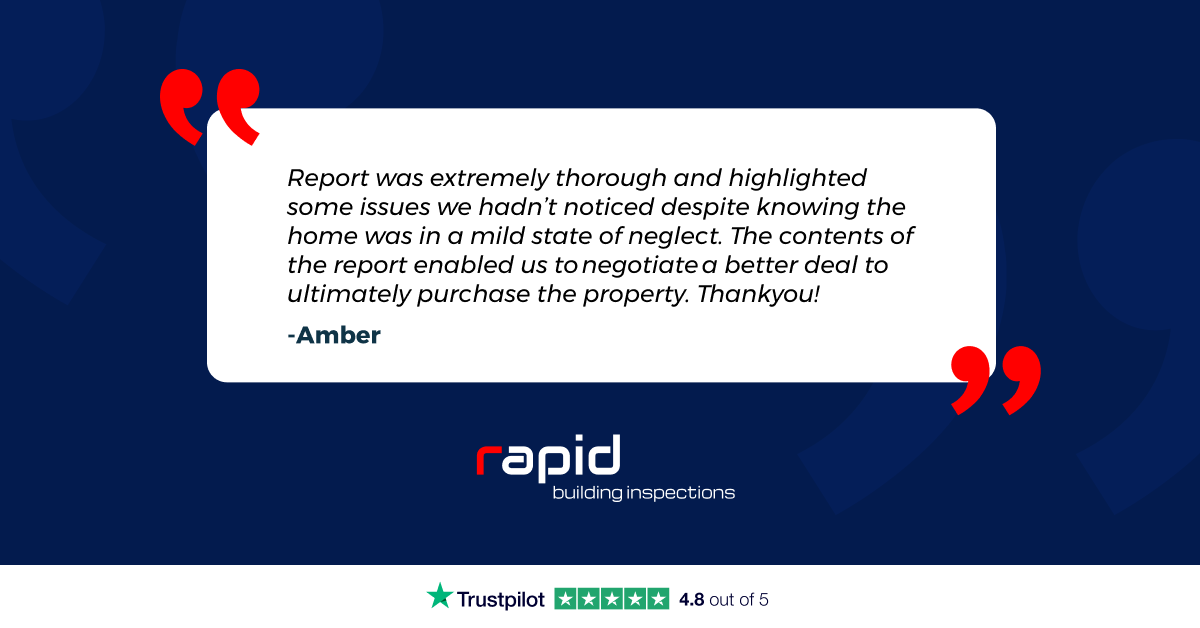
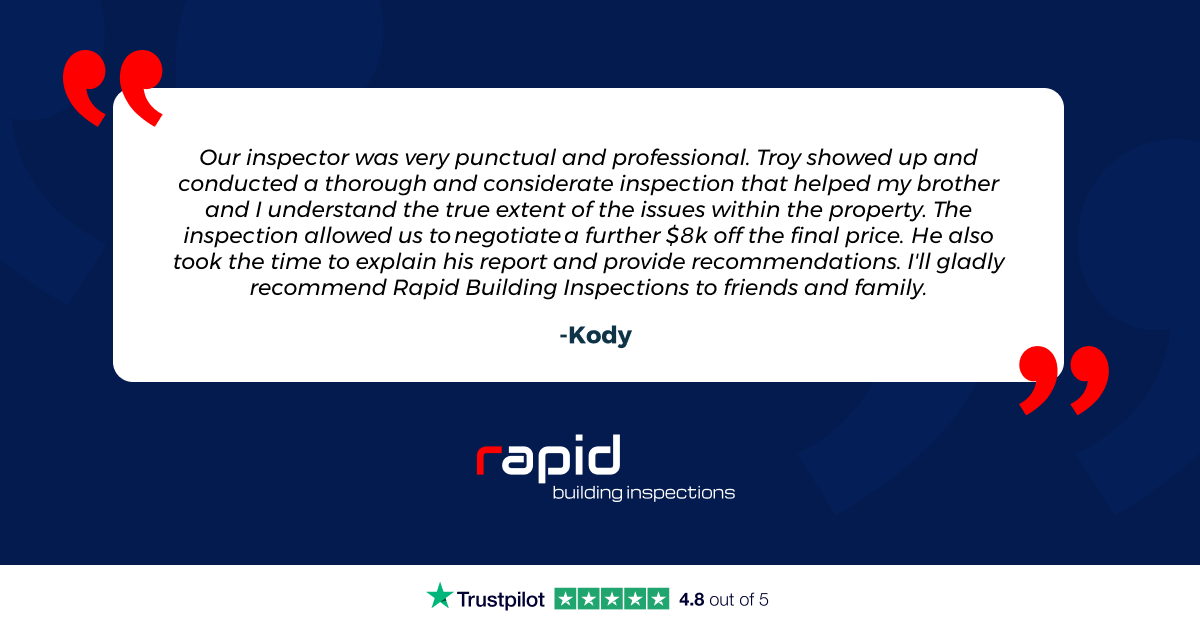
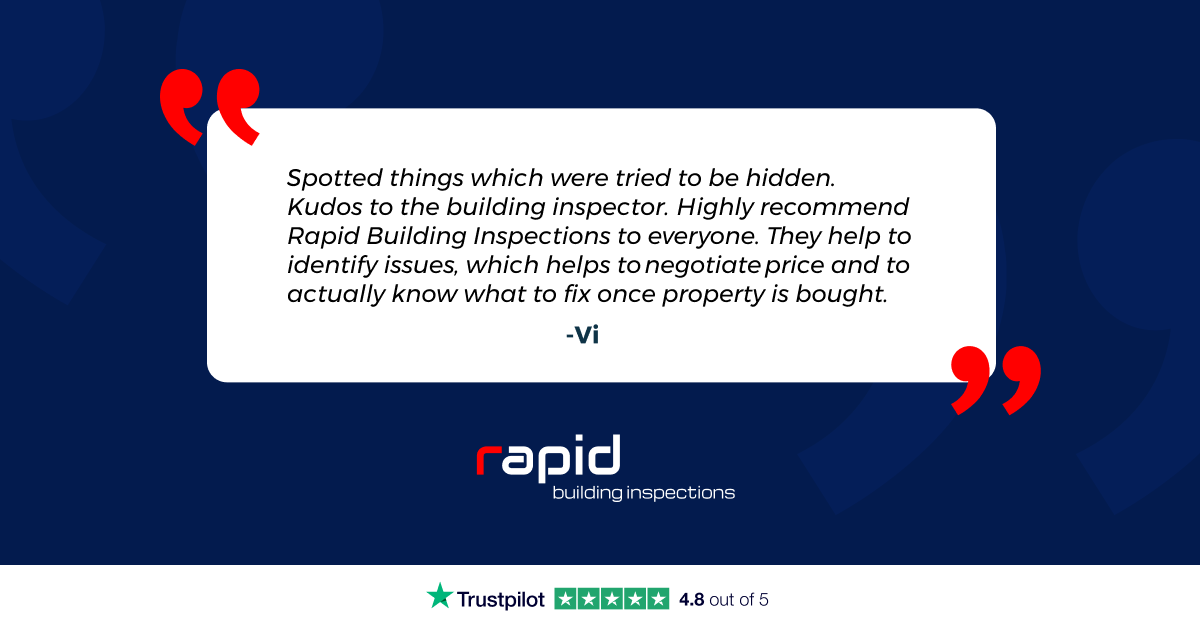
* Valid for all reports that have been paid for prior to inspection. The 24-hour guarantee applies on completion of the inspection and report sent out during normal business hours. For example, if the inspection has been completed on Friday or the day before a public holiday, it will be delivered on the following business day.
Get in touch with the team at Rapid today
We are available 7-days a week
If you still have any questions, feel free to contact us, and we’d be more than happy to answer any questions you may have.

Our friendly team are here to help you, 7 days a week, with all the facts you need to make a smart decision. If you wish to book an inspection or just have a few questions, please don’t hesitate to call us today on 1300 407 341.
We offer a wide range of services and inspect more than 10,000 homes a year. So, whether you are looking for a building inspection in Townsville, a pre-purchase pest and building inspection in Perth or anywhere in between, our services are trusted nationwide. We also provide depreciation schedules and building inspections in Sydney!
We’re on your side, and we’re here to help!
This article is provided for general information purposes only. Its content is current at the date of publication. It is not legal or financial advice and is not tailored to meet your individual needs. You should obtain specialist advice based on your specific circumstances before taking any action concerning the matters discussed in this article.
Get a Depreciation Schedule and you could save thousands

Make the most of your tax return
The end of the financial year is here, and if you own an investment property and want to maximise your return, it may be a good time to organise a Depreciation Schedule.
More information about lodgement due dates, including concessions, can be found on the ATO’s website.
What can you do to maximise your return?
Our Rapid Building Inspections team have teamed up with SJB Quantity Surveyors to make depreciation scheduling easier than ever. If you have an investment property, then getting a Depreciation Schedule will allow you to claim more on your tax return. It takes our team about 30 minutes to complete the inspection needed for your Depreciation Schedule and, depending on your circumstances, it could entitle you to thousands of dollars back with your tax return.
Sounds pretty good, right? Keep reading to find out more about Depreciation Schedules and how they work.
What is a Depreciation Schedule?
A Depreciation Schedule is like a building report for your investment property. It records all the different parts of your property and forecasts the rate at which their value will depreciate over time. Our schedules can be back dated 40 years, so you might even be able to claim from years you’ve missed and, if you are eligible to make a claim, the cost of the schedules will be fully tax deductible.
The Depreciation Schedule is broken down into three main categories – Capital Works, Plant and Equipment, and Capital Improvements.
Capital Works (or Building Allowance)
This refers to most fixtures and fittings such as the kitchen cabinets, windows, doors, locks, sinks, bath, or swimming pool. These usually make up around 90% of your total claim.
Plant and Equipment
This refers to items that can be removed from the building. It includes things like carpet, blinds, air conditioners, hot water systems, smoke alarms and ceiling fans.
Capital Improvements
This refers to any renovations or improvements made to a property and will be comprised of Plant and Equipment items as well as Building Allowance items.
All of the above items will have their own rate of depreciation, which is documented for you in the Depreciation Schedule.
You can find more information in our article on Depreciation Schedules. But if you’d like to get moving on booking your schedule, let’s get you set up with one today.
Why choose Rapid?
Our team are efficient, reliable, and ready to help. Getting your Depreciation Schedule could save you a lot of money. If you’re eligible to make a claim, then in the first year that you claim depreciation on your investment property from the ATO, we believe your claim will be at least twice the amount of the cost that you pay to us for the Depreciation Schedule. If not, we’ll give your money back*. You’ve got everything to gain, and nothing to lose.
Get ready for EOFY and get your Depreciation Schedule today. Book yours now.
Still have questions or you’d like to speak to someone? Get in touch with a member of our team. We’re more than happy to help.
Get in touch with the team at Rapid today We are available 7-days a week
If you still have any questions, feel free to contact us, and we’d be more than happy to answer any questions you may have.

4 tips to get your home ready for autumn

At Rapid, our team of trade experts inspect hundreds of houses every week. We’ve seen it all. From pristine properties to damaged disasters. But often the worst problems are ones that could have been avoided.
It’s true, weather, pests, and the quality of the build all contribute to the condition of your house. But one of the most important factors is how you maintain it.
With the right information you can keep your house in its best possible condition. Knowing how to take care of your home can save you from major problems like damp, termites and other issues.
As the seasons change, the work your house needs will change as well. Here are our top tips for autumn.
Table of Contents
| 1 | Autumn maintenance tips |
| 2 | Clean your gutters |
| 3 | Check your termite barrier is in date |
| 4 | Check your door seals |
| 5 | Check your window frames |
| 6 | Get A FREE Quote |
Keep your house in good condition with these 4 autumn maintenance tips.
1. Clean your gutters
Be prepared for the winter rains with clear and flowing gutters. Falling leaves and sticks can easily build up which causes water to overflow. Clear gutters will:
- help you gather rainwater in your tanks
- keep your house safe from water damage
- prevent excess water to pool around and under your house.
Excess water can affect the soil around your foundations which could destabilise the footing and cause the whole building to move. Movement at a foundational level can be very serious, it has the potential to impact the whole structure of your house.
Bonus tip: once you’ve cleared your gutters, you may also want to install a gutter guard to protect them from falling leaves and debris.
2. Check your termite barrier is in date
It’s important that your house is protected against termites. If left untreated termites can do incredible damage to your property. Make sure you have a termite barrier installed to keep your home safe. If you already have a termite barrier, it’s important that you speak with a pest technician to make sure it’s still in date.
Your termite barrier will last for several years but eventually they expire, leaving your house vulnerable. Unfortunately, termites are active in every season, so this autumn make sure your house is protected against these pests.
Bonus tip: Look for mudding slowly making its way up your external walls or pipes, this can be a sign of termites working. Don’t disturb the mudding but call a building and pest inspector to assess it for you.
3. Bad ventilation
Door seals cover the gap between the bottom of the external door and the floor. They’re especially important in autumn and winter not only to keep the house warm inside, but also to keep water out.
With colder weather, heavy rainfall and high winds, it’s important to make sure your doors work to keep your house weatherproof. Protect yourself against cold and wet weather by making sure your door seals are properly installed and working.
Bonus tip: Weather strips on doors and windows are a cost-effective way to stop air leaks and manage heating costs.
4. Check your window frames
If your window frames are made from timber, it’s important to make sure they’re thoroughly painted. The paint works to seal and protect timber from absorbing moisture. Unsealed frames will contract and expand from the moisture in the autumn air, which can cause them to swell and jam.
Always make sure to check if the windows are painted properly, paying close attention to top and bottom which are often missed. Stay warm and dry this autumn, by making sure all window frames are painted, sealed, and ready for the cold weather.
Use these tips to make sure your house is ready for autumn. Take some time now to check your gutters, door seals, window frames and termite barrier. A little bit of work now can save you from all sorts of problems in the season ahead.
If you’d like an assessment of your property from a trade professional, book a building and pest inspection with Rapid today.
Get in touch with the team at Rapid today We are available 7-days a week
If you still have any questions, feel free to contact us, and we’d be more than happy to answer any questions you may have.

Make sure your house can handle summer storms
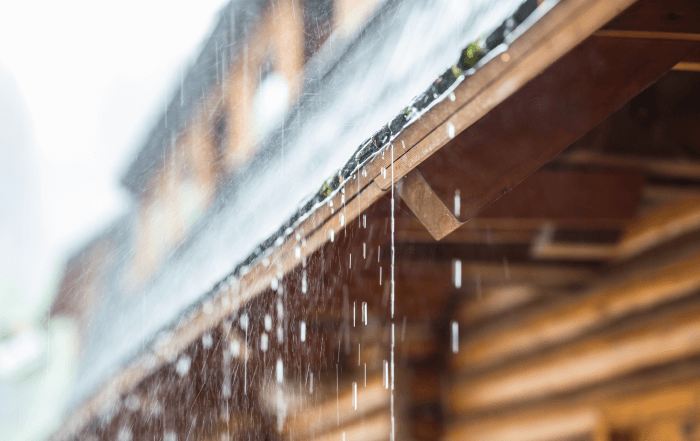
Australia’s summers are famous for long, hot days and beautiful beaches. But the summer heat also brings heavy storms. Which means that you want to make sure that your house is ready and weatherproof to handle them.
But the summer rains are also a great opportunity too. It actually means that summer is the best time to get a building inspection.
How to make sure your house is weatherproof
Every building has structural aspects that are important for weatherproofing. These are what a building inspector will make sure to examine when they inspect your house. While your house may look fine to you, there can be cracks and gaps that let water in and can have a damaging and costly impact.
There are several reasons your house may not be weatherproof:
- It may be a design problem, like the landscape of the garden that causes rain runoff to move towards your building.
- Or it could be damage over time like cracked or missing roof tiles that lets rain into the building.
- Thirdly, it could be a maintenance issue – like letting your gutters fill with leaves, so that water cannot flow easily.
A rainy season is the best time to get a building inspection
But there is good news too. The summer storms are actually a big help to building inspectors. The behaviour of water and the weakness of a building are both on display when it’s raining. Inspectors can easily spot problem areas during rainfall, which might be harder to spot when it’s dry. Which means the seller can’t hide the structural issues that would help to inform your decision.
- During the rainy season, inspectors can monitor gutters not holding water or flowing the wrong direction.
- They can see areas where the roof is leaking due to cracked roof tiles, damaged flashing and silicon sealants.
- Leaks will show up inside the house, with areas of damp or moisture on the walls. But In the dryer months these problem areas can be painted over and are harder to detect.
- The flow of water also shows any major gaps or cracks in the exterior walls.
- As well as yard drainage issues caused by landscaping around the house, or water flowing under the house.
If you’d like to check a house for weatherproofing, just get in touch with our expert team today. We can send an inspector to you right away to check your drainage, sealants, roof tiles, and more.
Book an inspection now.Get in touch with the team at Rapid today We are available 7-days a week
If you still have any questions, feel free to contact us, and we’d be more than happy to answer any questions you may have.






